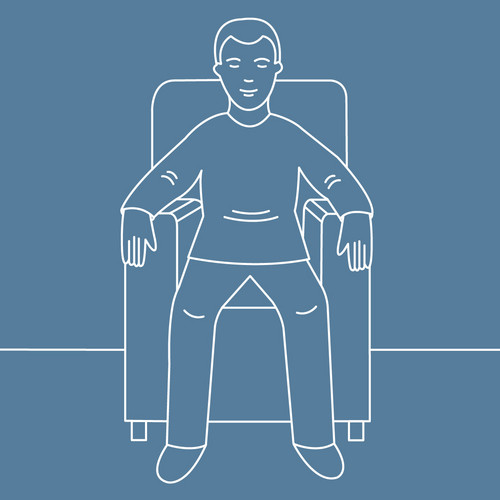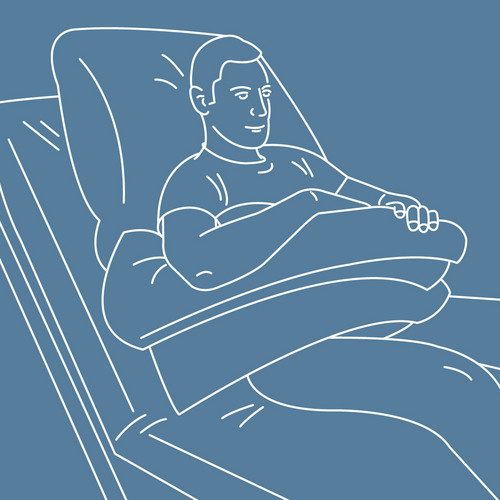Sitting like a pasha is a simple, breathe-easy position. It can help to quickly ease respiratory distress. In this position, your weight is on your arms. This makes it easier for the respiratory support muscles to do their job. Your chest and abdomen can freely expand as you breathe. This makes it easier to breathe.
Sitting like a pasha is, incidentally, also the ideal position for inhalation therapy with a nebuliser using, for example, NaCl or hypertonic saline solution. This is because it means that inhalation solutions and medications can be breathed deep into the lungs.
You can sit like a pasha in an armchair or in a bed with a high headboard. Respiratory therapist Marlies Ziegler explains how both variants of this position work.


This article was written in cooperation with Marlies Zieger. She works as a physiotherapist in private practice in Munich. She specialises in respiratory therapy. She has been treating patients with chronic obstructive and restrictive airway diseases such as asthma, COPD, cystic fibrosis (CF) and primary ciliary dyskinesia (PCD), for more than 20 years.
Note: The information in this blog post is not a treatment recommendation. The needs of patients vary greatly from person to person. The treatment approaches presented should be viewed only as examples. PARI recommends that patients always consult with their physician or physiotherapist first.
An article written by the PARI BLOG editorial team.
© 2025 PARI GmbH Spezialisten für effektive Inhalation